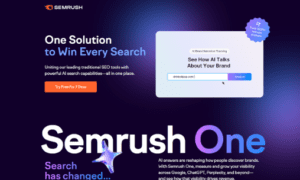The digital world is constantly transforming and evolving to accommodate the needs and demands of consumers. Lately, one of the biggest changes that have hit the digital landscape is related to the subtitle generation.
There’s no need to remind you how crucial subtitles have become. They aren’t used solely for commercial purposes, such as TV shows and movies, but for achieving a global reach, implementing different SEO strategies, and more.
Thanks to artificial intelligence, this aspect of digital content is taken up a notch, and if you would like to know how it has revolutionized it, then stay tuned because this guide is about to further delve into this topic.
A Decreased Need For Human Hands
Up until relatively recently, people with lots of experience in transcribing were the ones who got the job done. They would typically listen to the audio tracks, insert punctuation, and assign accurate timestamps, with the goal for the text to be in sync with the words said on-screen.
Although they were great at these tasks, the reality is that this whole process was very time-consuming and pricey, particularly for videos that are extremely long and/or complex, which normally require people with fantastic skills and experience.
And then you had streaming platforms, like Netflix, which further increased the demand for translation professionals. To make things radically simple when it comes to this, an AI‑powered offline transcription software was made, which made everything much less intricate, and above all, less costly. This is a tool that’s used across all kinds of industries and purposes.
With it, you can get a precise transcription in the blink of an eye, for practically any type of video, regardless of its length.
So, How Do These Solutions Work?
These kinds of tools make use of cutting-edge technologies, such as Natural Language Processing, Automatic Speech Recognition, and Machine Translation. All of them can quickly and efficiently analyze audio from video files, turning spoken language into text, and, concurrently, apply timestamps.
They aren’t solely focused on transcription. Namely, they are capable of identifying various speakers within a conversation, smartly leveraging capitalization and punctuation based on context, and translating the text into several languages in real-time.
How Much Can You Really Benefit From Them?
As soon as you start employing these AI advancements, you’ll immediately conclude how beneficial they are. For starters, you’ll notice that they are incredibly fast, especially in comparison to the human transcribers.
They would normally need a couple of hours to execute these tasks, while artificial intelligence would require a few minutes. This is the case even with the longer videos, which is especially pivotal for companies that have a massive workload (in terms of video generation) and content creators who are always tight on schedules.
Apart from being very effective, these tools are affordable, too! You’ll be saving a lot of money with them because you won’t be forced to hire human transcribers and translators.
It’s more than obvious that AI has completely changed the way subtitles are made. Even though on rare occasions, human expertise is required, as you can see, these tools have already become an integral part of subtitle generation.





























